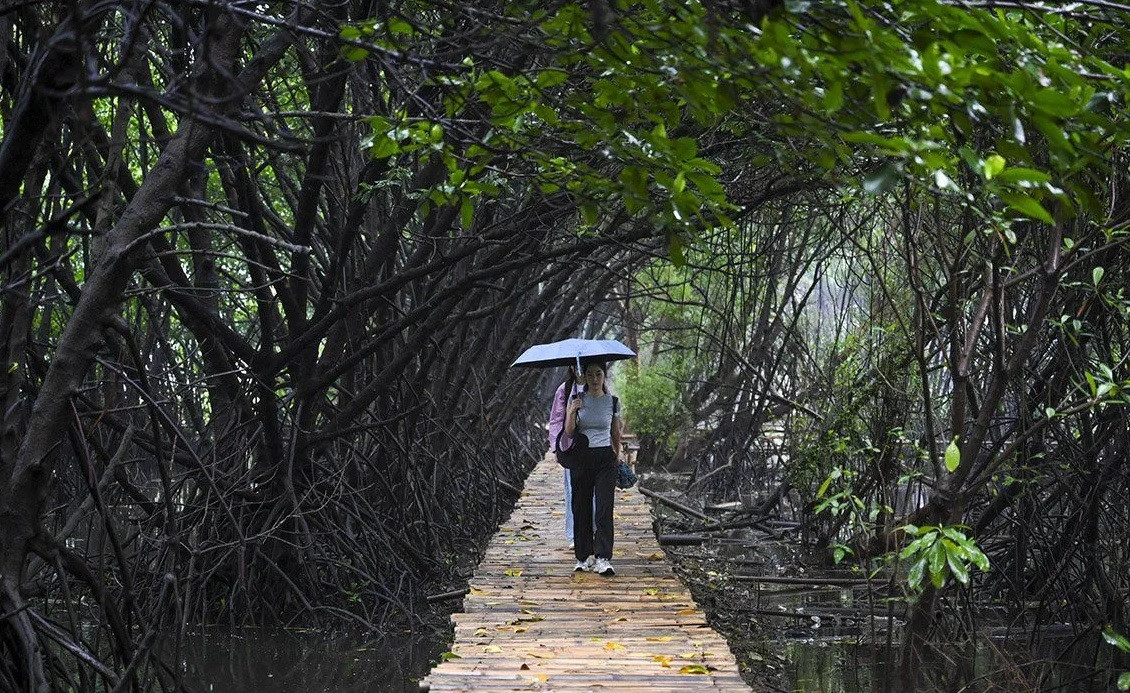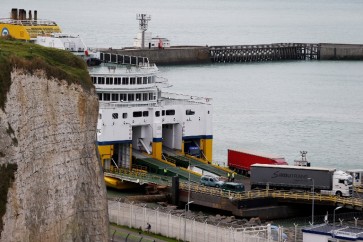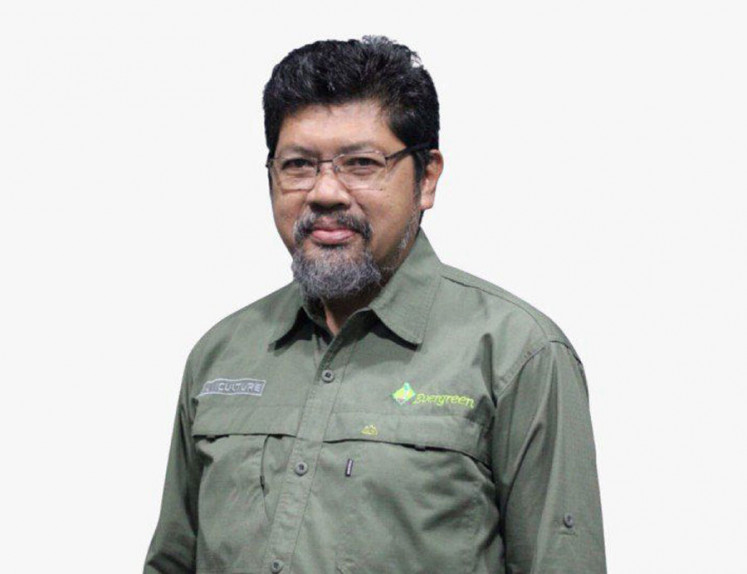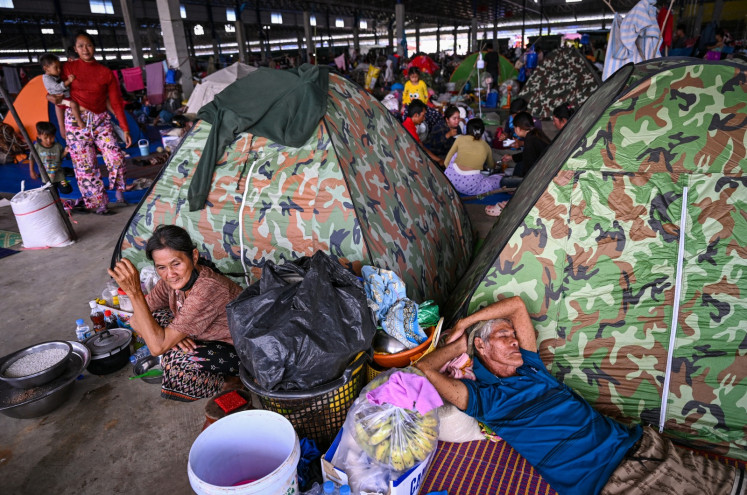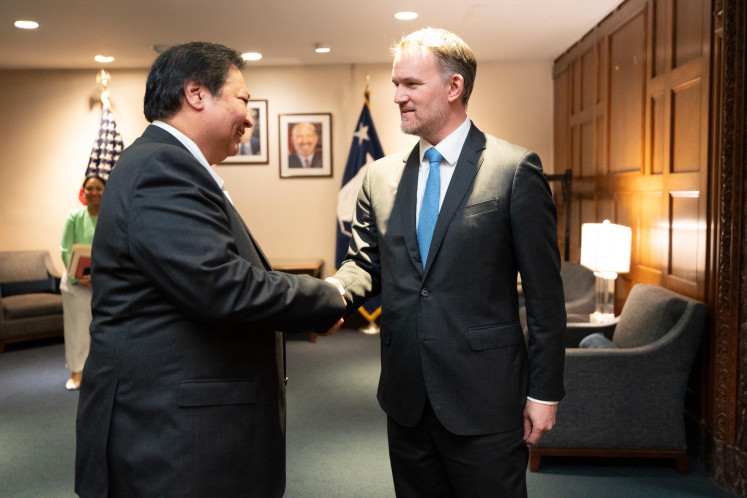Popular Reads
Top Results
Can't find what you're looking for?
View all search resultsPopular Reads
Top Results
Can't find what you're looking for?
View all search resultsA call for community-owned mangrove conservation
Mangroves, as one of the most effective blue carbon ecosystems, are critical to achieving emissions reduction targets.
Change text size
Gift Premium Articles
to Anyone
I
ndonesia holds a global responsibility with 3.44 million hectares of mangroves, home to the largest mangrove area on Earth. The country sits at the heart of efforts to address climate resilience, biodiversity loss and coastal livelihoods.
These ecosystems are natural protectors, absorbing wave energy, capturing carbon and serving as nurseries for fisheries that feed millions. In recent years, community-based conservation has been promoted as a practical model to involve local communities in managing these critical coastal landscapes, and it works.
Communities are often the first to notice environmental changes, respond to local threats and are most invested in the future of their ecosystems. However, as the scale and complexity of mangrove restoration grow, sustainability becomes key.
Ensuring long-term impact, community resilience and ecological functionality must prioritize over short-term, project-oriented scenarios that often fade once funding ends or external actors withdraw. To achieve that, Indonesia must shift from community-based participation to community-owned conservation.
This does not mean discarding what has worked, but rather evolving and deepening it. Community-based conservation is a starting point that opens doors, builds trust and creates momentum. In too many cases, projects are designed externally, implemented with local support and then wrapped up without fully transferring the vision.
Community ownership, by contrast, means communities are not just involved, but in charge. They lead planning, make key decisions, manage benefits and develop governance systems rooted in local knowledge and social structures.
This shift requires more than changing strategies, it requires changing mindsets. True ownership takes time to build and cannot be rushed through lengthy workshops and meetings. It depends on long-term partnerships, legal recognition of rights and a genuine willingness from outside actors to share control and step back.
At the same time, communities themselves often need time to develop the capacity and confidence to take full leadership of conservation efforts. The transition from being consulted to being in charge is complex and takes time, but absolutely essential for lasting environmental and social outcomes.
We've seen how this transition can unfold on the ground. In Bengkalis Regency, Riau Province, Konservasi Alam Nusantara Foundation (YKAN) has worked with two coastal villages to restore more than 200 ha of degraded mangrove ecosystems.
Initially, the initiative followed a typical structure: YKAN provided technical expertise, project design and conservation strategies, while communities played a key supporting role and performed work on the ground. But after nearly three years of continuous engagement, communities began to take more initiative.
The Village Forest Management Agency (LPHD) in Teluk Pambang organized local awareness campaigns, started experimenting with economic models based on mangrove resources and took over patrols, monitoring and coordination tasks that were once externally led. What began as a project is now growing into a movement driven by local leadership.
This evolution from community-based to community-owned must become the new standard if Indonesia is to achieve its ambitious goals of restoring more than 600,000 ha nationally. It is not enough to count seedlings or measure ha planted. Success must be defined by how deeply communities are involved, how much authority they hold and how effectively they can sustain conservation without ongoing external support.
The recent enactment of Government Regulation No. 27/2025 on Mangrove Protection and Management, while not without its limitations, offers an important legal foundation to place communities at the center of mangrove governance. The regulation also emphasizes that mangroves should be treated as a connected and continuous ecosystem, not fragmented by administrative boundaries.
Across Indonesia’s vast mangrove landscapes, the conditions for community ownership already exist. Traditional knowledge systems, local regulations and customary land claims provide a foundation.
What is needed now is stronger local policy support, secure tenurial rights, financial mechanisms that are designed to reach and empower local people and the motivation to replicate Teluk Pambang's success elsewhere. This is especially urgent as international attention on blue carbon reaches unprecedented levels, with surging interest in carbon markets, climate finance and ocean-based climate solutions.
As part of its global climate commitments, Indonesia’s Second Nationally Determined Contribution (NDC) pledges to reduce greenhouse gas emissions by 31.89 percent unconditionally and 43.20 percent with international support by 2030.
In the wake of the 2025 International Mangrove Day on July 26, let us remember that mangroves, as one of the most effective blue carbon ecosystems, are critical to achieving these targets. However, to ensure that restoration and protection efforts deliver real, lasting impact, community ownership and sustainability must be embedded from the outset.
They must be central pillars of any credible blue carbon strategy. That means putting local actors at the table, designing benefit-sharing frameworks with community input and aligning global ambitions with grounded, local realities.
***
The writer is blue carbon program manager at Konservasi Alam Nusantara Foundation (YKAN).

